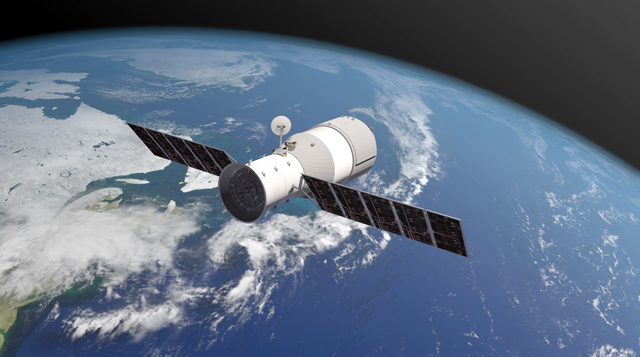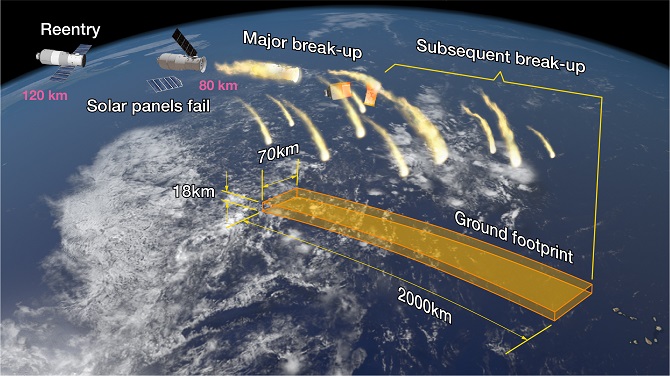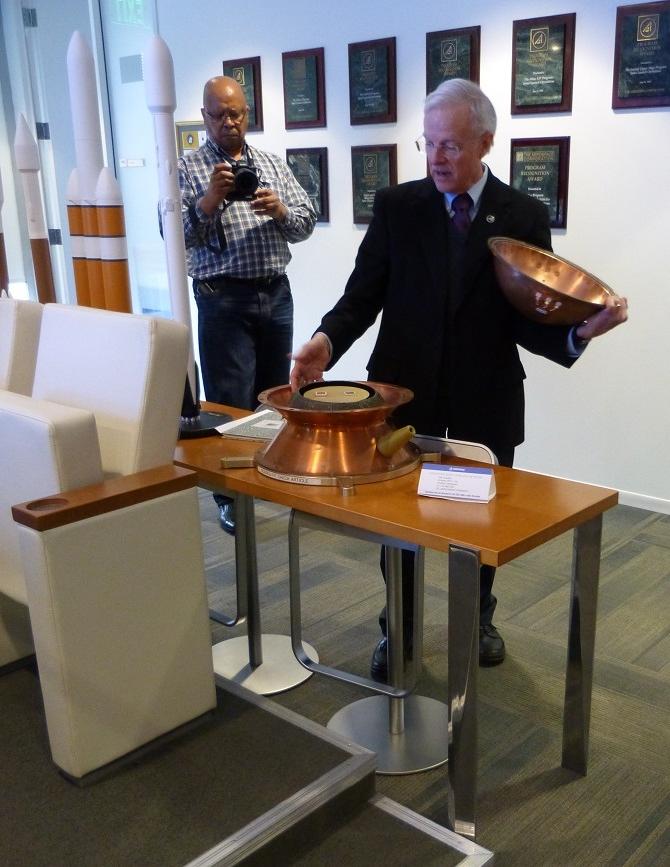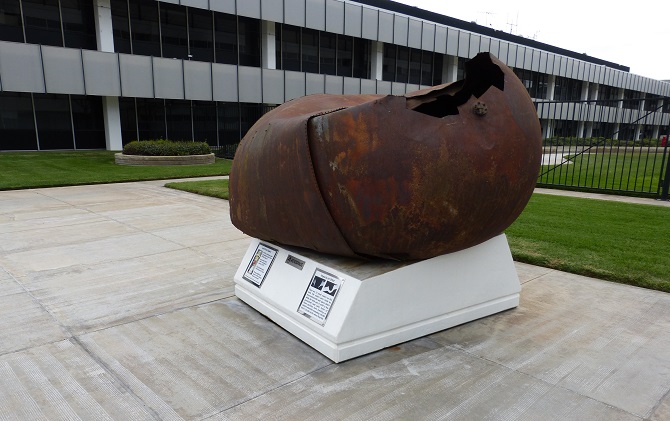
Chinese Space Station Tiangong 1 landed in the Pacific Ocean on April 1– right on schedule with Aerospace Corp.’s prediction.
The El Segundo-based nonprofit space research organization charted Tiangong 1’s decaying orbit and descent into the Earth’s atmosphere and ultimately projected a landing window for the craft.
Tiangong 1, which launched in in 2011, was China’s first manned space station and designed to be a short-lived prototype. It was not an “unusually large spacecraft,” said Ted Muelhaupt, associate principle director of Aerospace’s systems analysis and simulation subdivision. The school bus-sized Tiangong 1 weighed in at about 19,000 pounds – small compared with the 81-ton, or 162,000-pound, Skylab, which fell to Earth in 1979, or the 130-ton Russian space station Mir, which landed in 2001.
Much of Tiangong 1 was expected to breakup on re-entry. The space station’s main claim to general-public fame was a cameo in the 2013 Alfonso Cuarón film “Gravity” staring Sandra Bullock.
Aerospace provides objective space-related research support to the U.S. Air Force, NASA, the National Oceanic and Atmospheric Administration, the intelligence community, universities and commercial companies, such as Hawthorne-based Space Exploration Technologies Corp., or SpaceX. The federally funded nonprofit corporation was founded in 1960, and employs 3,900 people – including 2,500 in El Segundo – and reported $983 million in revenue last year.
Aerospace’s Center for Orbital and Reentry Debris Studies tracks re-entry breakups using tools and techniques it has developed for modeling debris objects in space, for collision avoidance and for re-entry breakup.
“The debris footprint can extend over hundreds of miles,” Muelhaupt said. “That’s why we need good data. Getting data is the most critical thing we do.”
Muelhaupt said the public will see more spacecraft re-entries over the next 10 or 20 years.
“Traffic is going to be a huge issue,” he said. “We want to make sure we can help them (launch providers) bring these in safely, and predict where they’re going to land. The best thing we can do with space debris is to not make any more.”


atmospheric re-entry.

